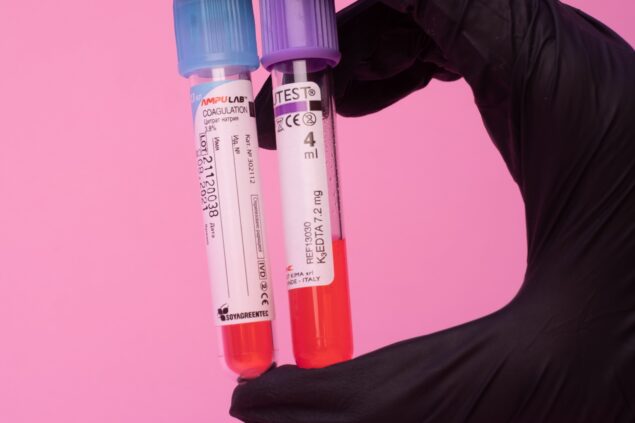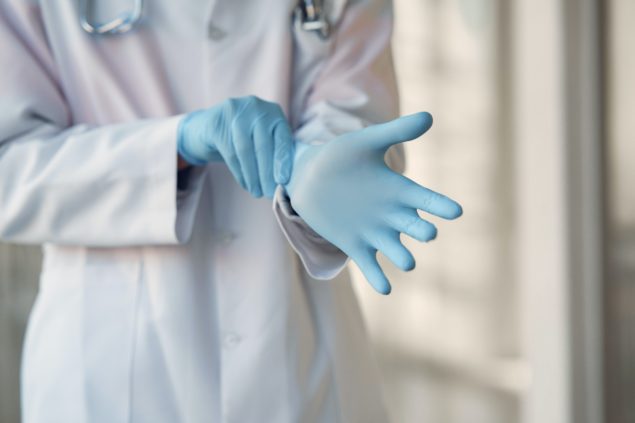Explainer Episode 53 – Biologics, Biosimilars, and the Two-fold U.S. Approval Framework’s Possible Impact on Prices

Biosimilars, a category of biologic (medicine derived from a living organism), require approval, at least in the U.S. by the Food and Drug Administration (FDA). There are two types of approval the FDA can give a biosimilar: “approved” and “interchangeable.” This distinction, unique to the U.S. system, along with the burden of proof required by the FDA, can cause confusion and create challenges for manufacturers seeking to get a biosimilar licensed.
In this podcast Dr. Roger Klein (M.D. J.D.) joins us to provide an introduction to biologics & biosimilars: what they are, how they are regulated/ approved in the United States, and what the effects of our current regulatory system can be for the approval of biosimilars.
Transcript
Although this transcript is largely accurate, in some cases it could be incomplete or inaccurate due to inaudible passages or transcription errors.
[Music and Narration]
Introduction: Welcome to the Regulatory Transparency Project’s Fourth Branch podcast series. All expressions of opinion are those of the speaker.
Chayila Kleist: Hello, and welcome to the Regulatory Transparency Project’s podcast. My name is Chayila Kleist, and I’m an Assistant Director of the Regulatory Transparency Project here at The Federalist Society as well as your host for today’s podcast. Today, we’re delighted to host Dr. Roger Klein for discussion on biologics, biosimilars, and the possible impacts on drug pricing. Dr. Klein, thank you so much for being with us today. We really appreciate you taking the time.
Dr. Roger Klein: Yeah. Thank you, Chayila. I’m excited to talk about this topic. Some of these drugs are among the most important innovations that we have in medicine, and the potential to have biologics, biosimilars—I’ll explain what those are—also gives us the opportunity to introduce competition and bring down the costs of these very helpful, but also very expensive, drugs.
Chayila Kleist: Well, thank you. For our audience, Dr. Klein is a Faculty Fellow at the Center for Law, Science & Innovation at the Sandra Day O’Connor School of — College of Law — excuse me — at Arizona State University. Dr. Klein is also Principal at Roger D. Klein, MD JD Consulting and Klein & Klein Co., L.P.A. He’s formerly Chief Medical Officer at OmniSeq, an oncology focused genomic profiling company that was acquired by LabCorp. Previously, Dr. Klein was the Medical Director at the Molecular Oncology division at the Cleveland Clinic. Dr. Klein has been an advisor to the Department of Health and Human Services, Food and Drug Administration, the Centers for Medicare and Medicaid Services, and the Centers for Disease Control and Prevention.
Dr. Klein is licensed to practice medicine in Ohio, Florida, and Wisconsin. Additionally, he is licensed to practice law in the District of Columbia and Ohio. Now, while there’s more to say, in interest of time, I’ll cut my introduction there. Although, if our audience would like to know more about Dr. Klein, please feel free to visit regproject.org and read his impressive full bio. With that, however, we can turn to our discussion. Starting at the beginning, what are biologics?
Dr. Roger Klein: Yeah. So Chayila, biologics are a unique class of medications, therapeutics, that are made from living cells. They’re made from living sources: bacteria, yeast, animals. And they include all sorts of biological molecules, something called antibodies—monoclonal antibodies.You may have heard of antibodies with COVID. These are molecules that are produced to fight infection, but they can also be designed to serve as drugs. They can include vaccines and even insulin. They’re commonly used in rheumatology and dermatology and, especially now, in oncology—so, in cancer care.
Chayila Kleist: Okay. So with that definition, in the United States, where we’re focusing this discussion, what is the process for approval or licensure of biologics?
Dr. Roger Klein: Yeah, so it’s — and I’m glad you mentioned licensure because biologics actually fall under a different law—under the Public Health Service Act—and are, in fact, licensed rather than approved under the Food, Drug, and Cosmetic Act. Really, it’s a very similar process, but — and it’s through FDA. But that’s a technical, legal point. So the process of approval for a biologic is really — is to prove, like any other drug, that they are safe and effective. So the standard is really the same. There’s an analysis of the chemical mixture. There’s an — what are called in vitro studies and animal studies and then, in clinical trials that prove the safety and effectiveness for a particular indication.
I think the important — the real important — the really important distinction between biologics and your — the standard drugs that we often talk about are because biologics are made or derived from living sources, they are — they’re harder to manufacture. They’re large molecules. They’re often not as pure, and they can have other features in them that make the manufacture complex and expensive.
This is, really, in contrast to, for example, a traditional drug like aspirin or a garden variety pill that you would take that has a defined chemical structure and is more readily reproduced, manufactured, and purified. And so, there’s — for both of these types of drugs, there’s extensive inspections. I mean, these are all rigorously inspected, and these are all rigorously regulated. But they have to — FDA has to look closely at the manufacture of these products, and biologics in particular, because you can — they’re so complex to manufacture, and you often even have variation from, for example, lot to lot.
Chayila Kleist: Okay. So with that sort of understanding of the framework of approval and what a biologic is, what is a biosimilar, and how are they used?
Dr. Roger Klein: Okay. So this is really the point of this particular podcast. And biosimilars could be analogized to a generic drug. So what they are is they’re an attempt to copy the biologic drug that is produced—the name brand drug. It’s called the reference product. And biosimilars really are an attempt to introduce competition into the marketplace—similar to a generic drug—to make, more or less, a copy of the originator or reference biologic in order to help bring down the price.
I think the difference is is because these are — the difference from, for example, a generic drug is because these are so hard to manufacture and hard to maintain consistency, even for the original reference product. They’re not identical copies. They’re what’s termed, “highly similar.” Again, the name is biosimilar, but that’s what they are. They’re highly similar to the reference biologic, and they’re not allowed to have any — or they won’t have any meaningful clinical differences in the — in performance and safety and effectiveness from the FDA-approved reference biologic.
Chayila Kleist: Okay. You’ve touched on this a little bit in saying that there is not a distinction necessarily in the effectiveness, but in thinking through what a biosimilar is, what are its benefits and then the risks of a biosimilar?
Dr. Roger Klein: So the benefits, as mentioned, would really be to create competition in the marketplace for certain drugs. So you have a drug that treats a particular type of cancer, say — what’s called a monoclonal antibody, a manufactured antibody that can bind to that cancer type and assist in killing it. But you have only one drug manufacturer, one manufacturer that’s biologic. Well, if you approve biosimilars that, again, would — will function in an equivalent manner, you thereby create competition. And in — like with a generic drug, the approval process for the biosimilar is abbreviated, and it’s really focused on making sure that it compares favorably to or equivalently, without loss of clinical performance, to the reference biologic. But you don’t go through that — you don’t have to reprove the whole concept, and by that less expensive process, it helps brings down the price of the drugs.
Chayila Kleist: So on that note, you earlier went through the process of approving a biologic. How does the approval process for biosimilars differ, and how is it the same?
Dr. Roger Klein: Well, the — so — and the other point—I’ll get into this because you also asked me what are the risks, and I do want to touch on that as part of this discussion—is the risks would be if it didn’t perform as well. So if, for example, the components — the mixture wasn’t exactly quite the same. It wasn’t sufficiently comparable, or there were other additives or materials in there that somehow produced more side effects or didn’t work as well for purpose. One of the areas in which we worry — potentially would be worried about that would be in drugs used to treat immune conditions. Is there a difference in, for example, responsiveness?
One of the things FDA does focus on is, for example, immunogenicity, which is the ability to — how does it affect the immune system. And does — and what — are there any implications for safety or performance? So when you look at biosimilar approvals, they’re really geared toward making sure that the biosimilars are, in fact, similar—highly similar. And that’s — and it’s really a comparison to the reference, which is, more or less, a control. So there’s a lot of analytic work to make sure the structure and the composition purity — those sorts of things — the ranges — it’s really ranges because, again, with a reference biologic because of how complex it is to manufacture them, they’re often not identical from lot to lot.
It’s making sure that those ranges are similar. You do — there are animal studies done and some clinical work done to look at, for example, what are called pharmacokinetic and pharmacodynamic properties. Again, looking — these are — relate to the metabolism of the drug and, again, are intended to ensure that they’re — that the performance is not functionally different from the biologic that has already been approved. But what they don’t have to do is they’re not reproving the concept that this particular medicine works in a particular disease.
Chayila Kleist: Got it. Appreciate the clarification of proving the concept versus addressing, “Does this do the same thing?” In my understanding—and please correct me if I’m wrong—is that, in the American system, there is a difference in the way the FDA can approve things. There’s two categories. It can be approved as an interchangeable biosimilar or as an approved/licensed biosimilar. What is the difference?
Dr. Roger Klein: So interchangeability is really — is a concept that’s kind of — that was put into the law—the original law—as part of the Affordable Care Act — as a section of the Affordable Care Act. There was a process for approving biosimilar medications inserted. And as part of that law, there’s a category called “interchangeability.” And what the law instructs FDA to do is to make sure that there’s sufficient evidence that changing from one — from the biosimilar to the reference product or to other biosimilars, making sure that that doesn’t cause any issues of safety and effectiveness. And the real distinction is is that, according to the law, then those drugs could be interchanged or substituted at the pharmacy level without the knowledge or — and without the participation of the ordering physician as with a generic medicine.
So that’s typically — the actual implementation of that particular part of the approval process in terms of whether or not a pharmacist could, for example, give somebody a biosimilar drug without involving the physician who ordered it. That’s usually regulated — or that is regulated at the state level. What this does—the interchangeability designation—is it creates a federal qualification or criteria that enables a state to allow substitution of the biosimilar medication by pharmacists. It doesn’t mandate it. It just permits it, and it designates them— the drug—as interchangeable.
Chayila Kleist: Got it. So the federal agency of the FDA creates a federal category, interchangeable, that states can then do what with as they will in their legislation on the issue. So they can say, “Hey, at the pharmacist level, you can swap this out. They may not.” But it’s a state decision, but this category, coming from the FDA, is a federal one.
Dr. Roger Klein: Yeah. So if the manufacturer were to petition FDA—either as an additional submission or as part of its original approval submission—petition FDA to be designated as an interchangeable medicine, it first has to meet that threshold criteria of being biosimilar, which, in essence, means that there’s no functional difference between the reference biologic and the biosimilar, so they’re really the same. But then, there’s additional studies that would be needed in order to get a designation of interchangeability, which would allow a state to make the determination that a pharmacist can substitute that particular medicine—that particular biosimilar—for the reference product.
Chayila Kleist: Okay. So I was going to ask what are the additional studies required to be labeled “interchangeable,” which is that step beyond?
Dr. Roger Klein: So what FDA does is it requires what are called “switching studies,” and these are what they sound like. The manufacturer’s required to take a group of patients, some of whom get the reference drug and then some of who are switched back and forth between the reference drug and the particular biosimilar, and the idea is to look — they look at the same types of measures that are looked at to determine biosimilarity. They focus heavily on a clinical sense on the idea of what are called pharmacokinetic—again, metabolism—or pharmacodynamic—how the drugs work — these particular properties and also immunogenicity—how the immune system responds to the drug—with trying to look at whether or not there’s any differences in effectiveness caused by switching back and forth from the reference drug to the biosimilar.
But again, the first threshold is a rigorous threshold in terms of being — having — not having meaningful clinical differences. In the first place, this is — these are just studies with — that request additional information to see whether or not there is an impact on performance from switching from the reference drug to the biologic. And again, the way the law reads, it’s — it can create risks of degraded performance or safety risks relative to somebody who just gets the reference drug.
Chayila Kleist: Got it. Thanks for the explanation of that framework, both of biologics and biosimilars. I’d love to turn now to the U.S. in the framework of the world. How does the U.S.’s approach — is it same or differ from that of other countries, particularly such as the European Union, which I recognize, not a country but still a regulatory body that oversees these kind of things?
Dr. Roger Klein: Yeah. So it’s — because every country’s not the same, it’s somewhat different to — it’s challenging, in some respects, to look at — to try to directly compare organization. But I think that a really strong comparison is with Europe, with the EU, so the EU would determine whether or not something’s biosimilar — a drug is biosimilar, and it would approve it on the basis of being clinically, functionally really without different — meaningful difference between — or from the reference product. So you would look to — the EU will look at it, and they say there isn’t — there’s no meaningful difference after looking at the same types of parameters that our FDA would. But they’d stop there. They wouldn’t — they don’t have another designation for interchangeability. And what — it’s approved; it’s approved.
And it’s up to the member countries whether or not they would allow substitution at the pharmacy level by — well, for example, without the involvement of the provider. But the truth is is that few do. And most of — in most or if not all — there’re very rare circumstances or unusual circumstances, I think, where these drugs are allowed to be in Europe, for example, substituted without the ordering physician’s input. But the fundamental structure is that they just stop at saying that there’s no meaningful clinical differences from the drugs and don’t require switching studies.
Now, I — as far I know, nobody else requires switching studies. And I think there’s an important reason for that, and that really — it isn’t that we know everything or that we don’t have to monitor performance after approval. In fact, it’s the opposite, and it’s one of the reasons, at least in my view, there should almost always be a physician involved in these decisions so that there’s somebody watching to make sure something’s — and no issues arise. But the fundamental idea is that, and I think there’s a wide consensus that the switching studies themselves are not likely to yield the information that — or to add additional information that’s going to be useable in actually uncovering whether or not there’re functional differences. The studies to make — to establish biosimilarity and the process is so rigorous that you’re — you would be looking at very fine distinctions, if they were even to exist, which would require much larger studies than can practically be accomplished. The measures are really — are very similar to the measures that are looked at for biosimilarity, and the odds of picking something up in this type of study seem quite low.
I’ve reviewed much of the literature out there, and there’s very little evidence that we’re seeing a difference in performance from these types of switching studies and — or from — even from other analyses, real life switching studies that aren’t part of any sort of approval process. I think, again, the fundamental issue is that, while conceding that we doctors, pharmacists, colleagues, and regulators don’t know everything, I think the basic point is is that the — in order to get that information, it’s going to take more extensive, post-market surveillance where we’re continually looking at and monitoring drugs to see whether or not there’s a difference rather than doing switching studies. I mean, you would have to use very large studies, and in fact, as we get more and more biosimilars, you really need to test all of them against each other if you want it to be logically consistent.
And so, I think that it seems like regulatory overkill, and I — the problem with this distinction is that it creates a lot of confusion among physicians. One of the ways that — these are very expensive drugs. One of the ways to help lower drug cost is to have competition, in particular, generic competition. And it’s very — to have two levels of approval makes it sound like the — that if you’re not interchangeable, you’re not fully approved or creates doubts in the minds of doctors and/or patients that what they would be receiving is not exactly — isn’t the first-rate product. It’s not the product that’s going to help them the best.
And I think the important piece of information, really, is that these biosimilar drugs are — have no meaningful clinical differences from their reference products. And this interchangeability designation is a distraction that really isn’t used. It’s not requested. It’s just out there and makes it appear that drugs that don’t have full — that haven’t gone through those switching studies that, again, are unlikely to yield benefits, that makes it seems that those drugs aren’t fully vetted.
Chayila Kleist: Okay. So our current regulatory framework, which this interchangeability distinction is, perhaps, unique to the U.S., seems to — has the possibility to impact the use of biosimilar drugs that fall into that lower category in so far as it seems that there is a distinction or a set of tiers or it might not be as beneficial or efficacious is the probably the term I want to use there. So some experts have argued for eliminating that separate interchangeability designation and, thus, the requirement for switching studies from this FDA approval process. Thinking about that, what are some of the harms of doing that, and then, what are some of the benefits?
Dr. Roger Klein: Well, I think there — the harms that some could propose would be that it could lead to, for example, substitution at the pharmacy level without the knowledge—and consent, quite frankly—of the patient and the participating physician. And so, the idea would be that then, at this stage, we’re still relatively early in the process and that pharmacists could make decisions and perhaps the patients — for freakonomic reasons, perhaps the patient and the physician wouldn’t even be aware of it. And I had mentioned, I think one of the key, and probably the best, means of really making sure things are working right is to follow them closely, and you can’t — if you’re not involved, you don’t realize, for example, what drug the patient has received, you’re not going to be alert and looking at and following those patients.
So that would be a — that would be the real harm — potential harm is that somehow states would go ahead and allow changing without — at the pharmacy level without letting the doctor and the patient know. And of course — and in addition to the actual — the potential decrease and ability to monitor, I think there’s also a psychological issue that — with a patient that need to be addressed. I think we’re always better if we explain things to patients; we let patients be involved in their care and explain to them what they’re getting and the reason for it and how it’s — how they’re likely to benefit rather than just having this done without a lot of thought or a lot of explanation. So those would be, I think, the primary harms, potentially.
Chayila Kleist: Okay. And you’ve covered a little bit of this, but some of the potential benefits of consolidating to one category of classification like the EU.
Dr. Roger Klein: Yeah. I think the primary benefit is that you have a more transparent, consistent, and, quite frankly, I guess, scientifically rational regulatory framework where you’re looking at the medicines with the knowledge that we have, using the knowledge that we have, and allowing providers and patients to understand that these drugs are, in fact, biosimilar, that they’ve been shown to have no meaningful clinical differences and not creating another category, which potentially could raise doubts among doctors and patients and discourage use of the biosimilars. That’s — and — because there’s a lot of room for uptake and growth in these biosimilars and a lot of ways to decrease the financial toxicity on patients while achieving the same outcomes. And those can be prevented by unnecessary fear.
The FDA’s clear on its website: these are — there’s no meaningful clinical differences in safety or in effectiveness among the approved biologic — the approved biosimilar and the reference biologic drug. And they even say, “Well, you can give the drug to patients who haven’t been treated, naïve patients, but also patients who have been treated, which is switching.” So you’re able to switch, and FDA is — they take pains to say that they’ve been through a very rigorous process, but I think this notion of interchangeability—which, honestly, isn’t — rarely, if ever, used—just introduces confusion and potentially decreases trust in the approval process.
Chayila Kleist: Okay. So it loops back around to where we started, which is defining the terms of “biologic” and “biosimilar.” We’ll wrap there unless there’re any final thoughts you have.
Dr. Roger Klein: Thank you very much, Chayila. I think it’s an important topic as drug pricing is in the news. The current Congress is looking at ways to reduce drug pricing. I think we’re getting amazing, amazing results from some of these types of drugs, which are new and have been — have really been — have been Godsends in, for example, treating cancer, but they’re expensive. And we have to deal with or address the financial costs in some manner, and I think trying to enhance competition is generally among the most effective ways to continue to increase this flow of lifesaving medicines while, at the same time, having suppliers compete to keep prices as low as possible.
Chayila Kleist: Well, thank you. Dr. Klein, really appreciate you taking the time to be with us today and share your expertise and insight. To our audience, thank you for tuning in and participating. You can find more like this at regproject.org. And with that, we’re all done. Thank you. Thank you. Really appreciate it.
[Music]
Conclusion: On behalf of The Federalist Society’s Regulatory Transparency Project, thanks for tuning to the Fourth Branch Podcast. To catch every new episode when it’s released, you can subscribe on Apple Podcasts, Google Play, and Spreaker. For the latest from RTP, please visit our website at regproject.org. That’s regproject.org.
[Music]
This has been a FedSoc audio production.

Speaker
Faculty Fellow, Center for Law, Science & Innovation
Sandra Day O'Connor College of Law
Topics
The Federalist Society and Regulatory Transparency Project take no position on particular legal or public policy matters. All expressions of opinion are those of the speaker(s). To join the debate, please email us at [email protected].








